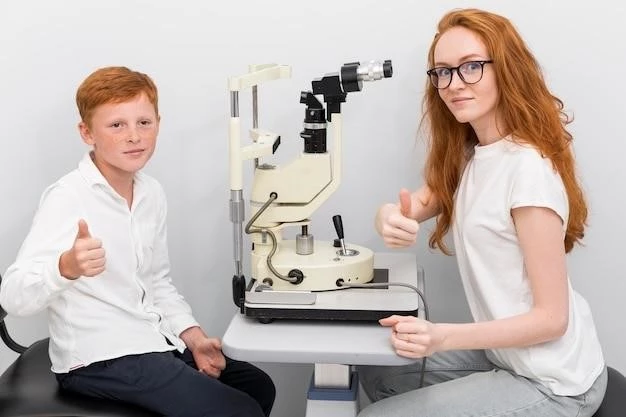Introduction
Septo-optic dysplasia (SOD) is a rare congenital disorder characterized by in-utero aberrant development of the optic nerve, optic chiasma, pituitary gland, hypothalamus, and/or midline brain structures. The disorder comprises wide heterogeneous abnormalities in the development of these structures.
Septo-optic Dysplasia Description
Septo-optic dysplasia (SOD) is a congenital anomaly characterized by underdevelopment of the optic nerve, optic chiasma, and pituitary gland, often accompanied by midline brain abnormalities. In some cases, patients with SOD may present with digital anomalies, adding to the diverse clinical manifestations of this condition.
Diagnosis of Septo-optic Dysplasia
Diagnosing Septo-optic dysplasia (SOD) involves identifying features such as optic nerve hypoplasia, pituitary gland abnormalities, and midline brain defects. The presence of two or more classic triad features is crucial for confirming the diagnosis, with neuroimaging studies playing a key role in providing a comprehensive assessment of these anomalies.
Clinical Features
Septo-optic dysplasia (SOD) presents a spectrum of clinical features, including optic nerve hypoplasia, pituitary gland abnormalities, and midline brain defects. Some individuals with SOD may also exhibit digital anomalies as an additional feature, emphasizing the diverse manifestations of this condition.
Optic nerve hypoplasia is a key clinical feature of septo-optic dysplasia (SOD), characterized by underdevelopment of the optic nerve. This condition can lead to reduced vision or other visual impairments in affected individuals, further contributing to the complexity of SOD presentations.
Optic Nerve Hypoplasia
Optic nerve hypoplasia is a common clinical feature of septo-optic dysplasia (SOD), characterized by underdevelopment of the optic nerve. This condition can result in vision impairment or various visual abnormalities, adding complexity to the diagnostic process of SOD.
Midline Brain Abnormalities
Septo-optic dysplasia (SOD) can exhibit midline brain abnormalities such as the absence of the septum pellucidum, corpus callosum disruptions, and hypothalamic-pituitary dysfunction. These structural variations contribute to the complexity of SOD presentations and may impact overall neurological functionality.
Etiology and Pathogenesis
The development of septo-optic dysplasia (SOD) involves genetic and environmental factors contributing to the intricate pathogenesis of this condition. Genetic studies have identified potential associations with specific genes, while environmental influences during pregnancy may also play a role in the etiology of SOD. Understanding these factors is crucial for comprehensively addressing the origin of this complex disorder.
Genetic Factors
The development of septo-optic dysplasia (SOD) involves intricate interactions between genetic and environmental factors. Genetic studies have identified potential associations with specific genes, shedding light on the genetic underpinnings of this condition. Understanding these genetic factors is crucial for unraveling the complexity of SOD pathogenesis.
Environmental Factors
Environmental factors play a role in the etiology of septo-optic dysplasia (SOD), with maternal disruptions such as multidrug abuse during pregnancy being implicated in the development of digital anomalies. Understanding the impact of environmental influences is essential for a comprehensive approach to managing and preventing the condition.

Epidemiology
Septo-optic dysplasia (SOD) is a rare condition, with an estimated prevalence of 1 in 50,000 live births. This congenital disorder exhibits a diverse range of midline neuroradiological anomalies, including optic nerve hypoplasia and hypothalamic-pituitary dysfunction, highlighting the complexity and rarity of SOD cases.
Prevalence of Septo-optic Dysplasia
Septo-optic dysplasia (SOD) is a rare condition with an estimated prevalence of 1 in 50,000 live births. This congenital disorder presents a complex array of midline neuroradiological abnormalities, including optic nerve hypoplasia and hypothalamic-pituitary dysfunction, contributing to the rarity and diversity of SOD cases.
Gender Distribution
Septo-optic dysplasia (SOD) affects both sexes equally, with no significant gender predilection identified in the prevalence of this rare congenital disorder. The condition presents with a diverse range of midline neuroradiological abnormalities, underlining the non-discriminatory nature of SOD across genders.
Septo-optic dysplasia (SOD) may present with digital anomalies as an additional feature, alongside optic nerve hypoplasia and pituitary gland abnormalities. This rare condition exhibits a diverse spectrum of associated anomalies, highlighting the complexity of SOD manifestations.
Septo-optic dysplasia (SOD) may present with digital anomalies as an additional feature, alongside optic nerve hypoplasia and pituitary gland abnormalities. This rare condition exhibits a diverse spectrum of associated anomalies, highlighting the complexity of SOD manifestations.
Associated Anomalies
Septo-optic dysplasia (SOD) may present with a spectrum of associated anomalies, including limb malformations in addition to the characteristic central nervous system (CNS) and ocular abnormalities. This combination of anomalies adds complexity to the clinical presentation of SOD, necessitating a comprehensive approach to diagnosis and management.
The diagnosis of septo-optic dysplasia (SOD) involves assessing features such as optic nerve hypoplasia, pituitary gland abnormalities, and midline brain defects. Clinical evaluation and neuroimaging studies play key roles in confirming the presence of these abnormalities, aiding in the comprehensive diagnosis and evaluation of SOD.
Clinical evaluation is essential in diagnosing septo-optic dysplasia (SOD) through identifying key features like optic nerve hypoplasia, pituitary gland abnormalities, and midline brain defects. Neuroimaging studies further aid in the comprehensive evaluation of these anomalies, enabling a thorough diagnosis of SOD.
Diagnosis and Evaluation
Neuroimaging studies play a crucial role in the diagnosis and evaluation of septo-optic dysplasia (SOD), allowing for the visualization of optic nerve hypoplasia, pituitary gland abnormalities, and midline brain defects. These imaging techniques aid in confirming the presence of structural anomalies and guiding the diagnostic process in individuals with SOD.
Septo-optic dysplasia (SOD) requires a multidisciplinary approach for management, involving specialists in ophthalmology, endocrinology, and neurology. Hormone replacement therapy is often recommended to address pituitary hormone deficiencies, while visual impairment may necessitate visual aids and educational support. The comprehensive management strategy aims to optimize the quality of life for individuals with SOD.
Septo-optic dysplasia (SOD) necessitates a multidisciplinary approach involving specialists in ophthalmology, endocrinology, and neurology for comprehensive management. Hormone replacement therapy is often recommended to address pituitary hormone deficiencies, while visual impairment may require visual aids and educational support. The overarching goal of treatment is to optimize the quality of life for individuals with SOD.
Management and Treatment
Hormone Replacement Therapy (HRT) is a recommended approach in managing pituitary hormone deficiencies associated with septo-optic dysplasia (SOD). This therapy aims to address hormonal imbalances and optimize endocrine function in affected individuals, contributing to improved health outcomes and overall quality of life.
Septo-optic dysplasia (SOD) can lead to visual impairment, growth hormone deficiency, and other complications. Early detection and intervention are important to manage these issues effectively and optimize outcomes in individuals with SOD.
Septo-optic dysplasia (SOD) can lead to visual impairment, growth hormone deficiency, and other complications. Early detection and intervention are important to manage these issues effectively and optimize outcomes in individuals with SOD.
Prognosis and Complications
Septo-optic dysplasia (SOD) can lead to visual impairment, growth hormone deficiency, and other complications. Early detection and intervention are important to manage these issues effectively and optimize outcomes in individuals with SOD.
Research on septo-optic dysplasia (SOD) has focused on understanding the genetic and environmental factors contributing to this complex condition. Recent advances include genetic studies identifying potential gene associations and novel therapeutic approaches being explored. These advancements are crucial in enhancing our understanding and management of SOD.
Research on septo-optic dysplasia (SOD) has focused on understanding the genetic and environmental factors contributing to this complex condition. Recent advances include genetic studies identifying potential gene associations and novel therapeutic approaches being explored. These advancements are crucial in enhancing our understanding and management of SOD.
Research and Recent Advances
Research on septo-optic dysplasia (SOD) has focused on understanding the genetic and environmental factors contributing to this complex condition. Recent advances include genetic studies identifying potential gene associations and novel therapeutic approaches being explored. These advancements are crucial in enhancing our understanding and management of SOD.
Case studies offer insights into the diverse presentations of septo-optic dysplasia (SOD). For example, a 16-year-old female with SOD and digital anomalies showcases the variable clinical manifestations of this rare developmental anomaly. Understanding individual cases aids in tailoring management strategies for optimal outcomes.
Exploring individual cases, such as a 16-year-old female with septo-optic dysplasia (SOD) and digital anomalies٫ offers valuable insights into the diverse clinical presentations of this complex developmental disorder. These cases contribute to our understanding of the variable manifestations and guide personalized management strategies for optimal outcomes.
Case Studies
Exploring unique cases of septo-optic dysplasia (SOD) unveils the diverse clinical presentations and complexities of this condition. Each case offers valuable insights into the variable manifestations and challenges faced by individuals with SOD, highlighting the importance of personalized management strategies.
Addressing the challenges in managing septo-optic dysplasia (SOD) involves long-term issues such as visual impairment and growth hormone deficiencies. Identifying potential areas for further research, particularly in genetic studies and treatment modalities, is crucial for advancing the understanding and management of this complex condition.
Long-term management issues in septo-optic dysplasia (SOD) encompass addressing visual impairment and growth hormone deficiencies, which can impact the quality of life of affected individuals; Identifying potential areas for further research, particularly in genetic studies and treatment modalities, is vital for advancing the understanding and management of this complex condition.
Challenges and Future Directions
Potential areas for further research in septo-optic dysplasia (SOD) include investigating the role of genetic factors in disease development, exploring the efficacy of novel therapeutic approaches, and enhancing the understanding of the complex pathogenesis underlying SOD. These research directions are essential for advancing diagnostic and treatment strategies for individuals with SOD.
Providing education and support for individuals with septo-optic dysplasia (SOD) is crucial for fostering coping strategies and enhancing overall well-being. Support groups and resources can offer valuable assistance and a sense of community for both patients and their families navigating the challenges associated with SOD.
Coping strategies play a vital role in assisting patients and families affected by septo-optic dysplasia (SOD) in navigating the challenges associated with the condition. Educating individuals about SOD, providing emotional support, and offering practical coping mechanisms can enhance their ability to cope with the complexities of the disorder and improve their overall quality of life.
Patient Education and Support
Support groups and resources play a crucial role in providing emotional assistance and practical guidance to individuals and families affected by septo-optic dysplasia (SOD) with digital anomalies. These avenues offer a supportive community and valuable information to help navigate the challenges associated with the condition.
In conclusion, septo-optic dysplasia (SOD) presents as a rare congenital disorder with diverse features, including digital anomalies, optic nerve hypoplasia, and hypothalamic-pituitary dysfunction. Early diagnosis, multidisciplinary management, and ongoing research efforts are vital to improve outcomes and support individuals and families affected by SOD.
Septo-optic dysplasia (SOD), a rare congenital disorder, presents with a spectrum of features, including digital anomalies, optic nerve hypoplasia, and hypothalamic-pituitary dysfunction. Early diagnosis, multidisciplinary management, and ongoing research are crucial for supporting individuals and families affected by SOD and improving outcomes.

Conclusion
Early detection and intervention play a vital role in improving outcomes for individuals with septo-optic dysplasia (SOD) and digital anomalies. Timely identification of the condition allows for the implementation of appropriate management strategies to address visual impairment, growth hormone deficiencies, and other associated complications, ultimately enhancing the quality of life for affected individuals.
